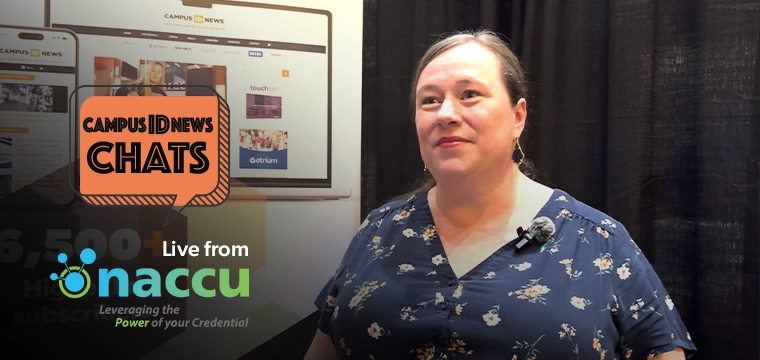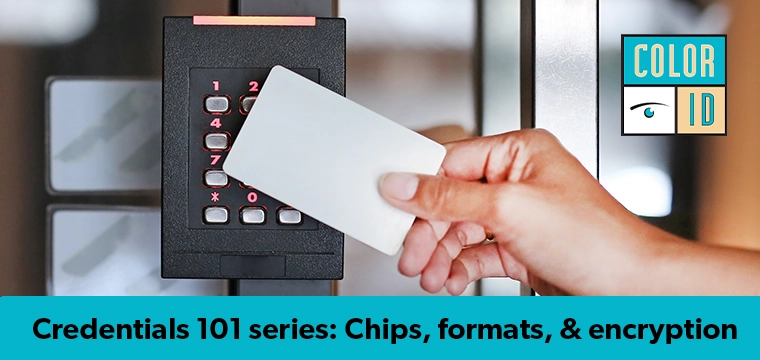
They are everywhere. Within reach as I sit at my desk, I find one on a box of CDs, several on mailing labels and magazines, and others on each component of computer equipment. In my wallet I find a barcode on my insurance ID card, my library card, a movie rental card, and a grocery store loyalty card. On campus many student ID cards utilize barcodes as do most book tracking and patron identification programs in libraries. In stores, they are found on nearly every commercially sold product. Barcodes are so pervasive that we don’t even notice them anymore.
In campus ID programs, there seems to be two schools of thought: 1. Put a barcode on the card because certain systems (e.g. library checkout) are geared to accept data from a barcode, and 2. Remove the barcode from the card and utilize a special reader to convert magnetic stripe data to the format mimicking previous barcode data. To fully grasp the ramifications of this decision, an understanding of barcode technology is helpful.
The barcode is essentially a symbolic representation of data in machine-readable format. In other words, a barcode translates numeric and sometimes alphabetic characters into a series of black and white spaces that can be read by an electronic device. In much the same way that a computer stores data as a series of zeros and ones and a magnetic stripe stores data as a series of positive and negative charges, a barcode stores data as black and white bars.
A barcode reader, called a scanner, emits a beam of light at these bars and measures the reflection of the beam. Black areas absorb light while white areas reflect light. By monitoring this process the scanner can accurately read the order of the black and white bars. A computer then utilizes this data for purposes of product or patron identification, inventory tracking, or other functions.
The key to the barcode lies in the standardization of the encoding/printing and reading/scanning processes. There are a number of commonly used symbologies, each having different data storage capabilities, character sets (numeric-only, alphanumeric, ASCI, etc.) and common applications. Common symbologies include Interleaved 2 of 5, Code 39, Code 128, Codabar, and the Uniform Product Code (UPC). You can think of these as different typefaces.
While each symbology is unique, the conceptual process is the same. To understand this process, a breakdown of the UPC barcode is presented.
The UPC is a standard developed by theUniform Code Commission (UCC) that is utilized to identify all products at the point-of-sale. The UPC is capable of representing numeric characters only and combines a machine-readable barcode with visible numbers that can be read by store clerks when necessary (e.g when the product doesn’t scan at the grocery store register).
Each product has a unique 12-digit UPC. Manufactures apply for a six-digit identification number that is assigned from the UCC in Dayton, Ohio. The next five digits are defined by the manufacturer and represent a specific product in the manufacturer’s product line. The final digit is a check digit that is the result of a mathematical calculation utilizing the previous 11 digits. This check digit enables a scanner to conduct the same mathematical formula on the first 11 digits and verify the accuracy. If the result matches, the scanner presumes that a valid reading was obtained. If not, an error message is given and the barcode must be scanned again. (This is often what happens when the grocery store clerk scans a product, hears the beep, and then rescans again.)
In reality, even the machine-readable part of a barcode can be translated by a patient eye. Remember it is simply a series of black (B) and white (w) bars. UPC utilizes seven bars to create a single character. The pattern of these bars is the key, for example W-W-B-B-W-W-B represents the number one.
The first three and last three bars tell the scanner to start and end the reading. They are always B-W-B. The center point is signaled by a seven bar indicator that is always B-W-B-W-B-W-B. The total number of bars in a UPC barcode is 97 [start indicator (3 bars) + 12 characters (84 bars) + center indicator (7 bars) + end indicator (3 bars)]. Though it is not easy, you can translate a barcode using only your eyes and a pencil and paper.
As mentioned in the intro to this review, an understanding of barcode technology can help a campus card administrator make informed choices about barcodes and the ID card. As we have seen, there is nothing magical about a barcode. It is simply a machine-readable symbology for data. When an existing campus system utilizes a barcode and the personnel demand that they must have this barcode to operate, they are likely confusing the technology with the data. Using the library as an example, the patron identification system must have a number of certain length—often nine or 14 digits—to operate. Whether that the system gets these digits via a barcode or some other means is a matter of front-end reader hardware. The true goal of the librarian should not be to protect the barcode, but to protect the existing patron identification system. Let’s face it, nobody wants to redesign their system because of another department—in this case the card program—is making a change. The fight to “keep the barcode” is often born more from lack of understanding and communication than anything else.
Print a barcode on the card.
Plusses: No ‘sales’ job with barcode devotees; no wedge or swipe readers needed at acceptance points. Negatives: Takes up physical space on the card, is not aesthetically pleasing, involves additional database work prior to issuance to link the barcode files and print them on the cards, barcodes can wear and become unusable with time.
Remove the physical barcode and generate a number of the same length mathematically from the ISO or student ID number already encoded on the magnetic stripe on the card.
Plusses: No physical barcode. Negatives: Must install a wedge reader at each acceptance point to convert the ID number to the correct number of digits for the system; must replace the existing table of patron identification numbers in the library database with the new table of numbers that result from the mathematical calculations on the ISO or student ID number.
Take the actual barcode, as it now exists, and encode it on the card.
This can be done using an unused section of track 1 or 3 on the magnetic stripe or a new file on the chip for those with microprocessor chip cards. Plusses: No changes required by the patron identification system, they need only provide the card program with the database of ID numbers. Negatives: Only that the non-standard encoding must be planned so that standard encoded data is not jeopardized.
Today, expanded data storage capability is available using two-dimensional barcodes (2-D). The codes use the vertical space as well as the horizontal space to symbolize data. Resembling a random pattern of black and white squares, 2-D symbologies like PDF416 are greatly increasing the possibilities and applications for barcode technology. While we have still not heard of a campus utilizing a 2-D barcode on the campus ID card, many other industries have adopted the technology for its cost effective ability to store significantly larger amounts of data then either a traditional barcode or a magnetic stripe.
Editor’s Note: In an upcoming issue, we investigate how some campuses are generating a barcode-like number from the data already housed on the magnetic stripe, thus enabling their barcode’s elimination. We will also explore why some have decided that this is not the best route for their campus. Click here to learn more.




